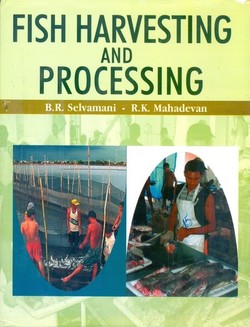
Fish Harvesting and Processing
By
B.R. Selvamani and R.K. Mahadevan
Preface
The wealth of aquatic resources was assumed to be an unlimited gift of nature. Fish contribute substantially to the world supply of animal protein, either directly or through their use as feedstuff for livestock. Fishing, fish processing and fish trading have provided food, employment and income in coastal and inland communities for centuries. Fishing is an ancient and worldwide practice with many techniques and traditions, and it has been transformed by modern technological developments. Increased incomes and appreciation of the dietary value of fish are spurring the demand for fish and fish products in the industrialised countries. In the developing regions, population increases and the need to tap every potential source of food and foreign exchange provides the main impetus for increased fishing activities.
Fish harvesting simply means catching the fish. In early times man hunted fish to supply food for his family and himself, fishing from the sea shore or river bank, using spears, crude hooks and lines and simple traps. When he took to the water in the first rough dugouts, his field of operations was substantially extended. As the pattern of community living developed and preservation techniques such as drying and curing became established fish became not only food for the catcher but also a staple commodity of trade. Competition and technological advances slowly brought about improvements in fishing gear and new methods of capture appropriate to the target species sought were evolved by trial and error down through the centuries.
Although not as physically demanding as harvesting, processing also is taxing work. Processing involves relatively little physical risk, but requires working very long hours spent performing repetitive and often undesirable tasks. Until recently, fish processing was carried out mainly in kitchens at home, in restaurants and in catering centres. Occasionally, fishmonger shops and small fish processing plants produced semi-products in rudimentary conditions and placed them on the market. However, changing requirements and habits of customers created the need for an increased market supply of ready-to-cook or ready-to-serve dishes. This trend will intensify and, if they are not to lose the market, the existing processing plants will have to be modernised.
By describing the fundamental principles and technologies involved in fish harvesting and processing, the book gives a comprehensive overview to the subject. It also offers diverse information on these crucial processes in fish industry to make the readers up-to-date with the latest developments in this field where scientific information has not only been fast but enormous too in the last decade.
Contents
1. Introduction to Fishing
2. Traditional Methods of Fish Harvesting
3. Mechanised Fish Harvesting
4. Fish Aggregating Devices
5. Commercial Fishing Methods
6. Fish Harvesting Capacity
7. Freshwater Fish Processing
8. Fish Canning
9. Importance of Sanitation in Fish Processing
10. Governance of Capture Fisheries
11. Regulation of Fishing Morality
12. Future of Marine Capture Fisheries



ساحة النقاش